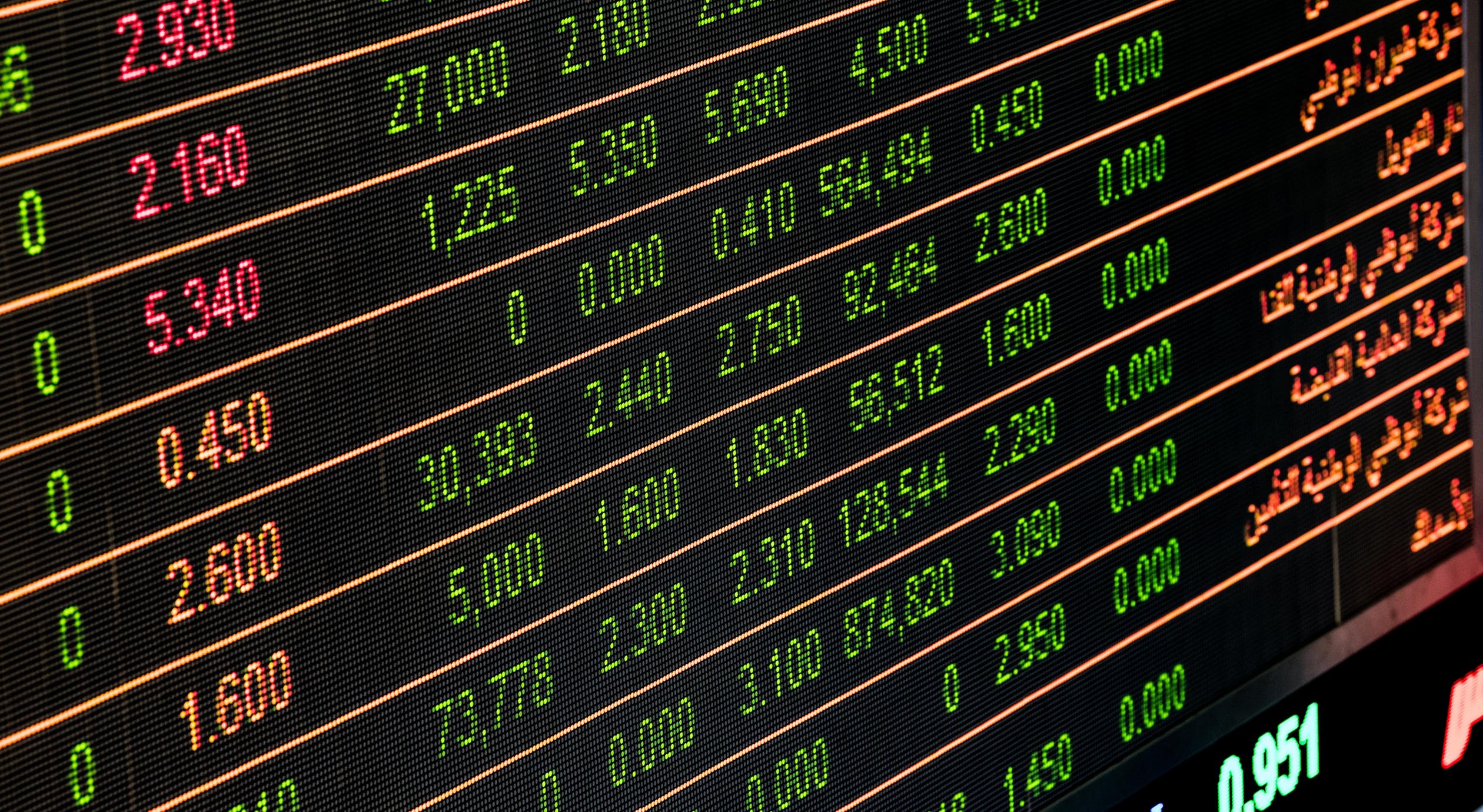Economic update – May 2022
By Infocus Author
In this month’s update, we provide a snapshot of economic occurrences both nationally and from around the globe.
Key points:
– Australian inflation rises strongly on the back of fuel prices and construction costs
The Big Picture
Just when it seemed that the markets had settled down after an updated rate hiking strategy from the US Federal Reserve (“Fed”), Fed chair Jerome Powell spooked markets with a strong statement about “front loading” the hiking process i.e. more rate rises earlier in the cycle.
Markets had already priced in a double hike (0.50%) for May 4 but the idea of front loading brought forward further double hike expectations. The market is now expecting a Fed funds rate of 2.75% by the end of 2022 from the current 0.25% to 0.5%.
We think the initial savage sell-off in late April was uncalled for. Perhaps that’s partly why the market bounced back sharply in the close to April – egged on by some splendid big tech earnings’ reports – until Amazon missed expectations and the markets tanked on the last day of the month.
What makes it harder to disentangle the forces that are currently driving markets is that the bounce back started on the release of a US economic growth rate of 1.4% (annualised) for the March quarter of 2022. Economists had expected +1.0% so this figure was a big miss. However, most dismissed the negative read as “noise” and not a “signal”.
The three usual suspects of the pandemic, inflation and the Ukraine invasion complicated the analysis. There was a record US trade imbalance as the post pandemic world tries to get back into shape. The Fed’s preferred “core Private Consumption Expenditure” (PCE) inflation read that strips out volatile energy and food prices was a substantial 5.2% – well above the Fed’s target rate of 2%.
Australia also posted an inflation read in the last week of April. The quarterly rate was 2.1% (not annualised) making for an annual rate of 5.1%. The Reserve Bank of Australia’s (“RBA”) target range is 2% to 3%. Before the last few quarters, inflation had been below 3% for about a decade. For about six years of that decade inflation had struggled below the RBA’s target range.
Some economists are clamouring for the RBA to hike rates aggressively to control inflation. This strategy is not without some risk. In the latest quarter, the price of automotive fuel rose by 11.0%. That increase is due to the supply effects emanating mainly from the Russian invasion of the Ukraine in the March quarter. A rate hike in Australia cannot have any meaningful impact on such a supply constraint occuring on the other side of the world.
Skyrocketing fuel prices are an important input cost component for most business. When the RBA, or the Fed, tries to strip out volatile energy and fuel prices it cannot isolate business input costs from the impact of higher fuel prices so volatile items do feed into the ‘core inflation measure. As a result, core inflation and the RBA’s “trimmed mean” inflation are over-estimates of underlying inflation when all energy cost are stripped out.
Similarly, the pressure on prices of soft commodities such as wheat caused by the Ukraine invasion pervade not just the obvious grocery price increases but also restaurants, cafes and take-aways amongst other businesses.
The RBA’s trimmed mean measure of inflation was only 3.7% which is only just above the target range – and that is without stripping out the indirect impact of the Russian invasion.
The RBA rate is very low and the Fed has only just made a very modest start to increase its rate. There is plenty of room for both countries’ rates to rise without causing growth problems. When rates are below the so-called neutral rate (of around 2.5%) rate hikes do not really equate to policy tightening. Rather such hikes equate to “less slackening”.
The fear some have is that the US – and/or Australia – could cause a recession by increasing interest rates too far and/or too quickly. We – like many others – are yet to be convinced that the latest negative read in US growth will lead to a recession. However, an unnecessarily aggressive set of rate hikes – to even below the neutral rate – could frighten equity markets and, in turn, impact the real economy through a wealth effect. We currently do not think that measured interest rate hikes should hurt the economy.
The IMF posted its updated 2022 growth forecasts for the world and major countries in the last week of April. World growth expectations were downgraded to 3.6% with Australia at 4.2% and the US at 3.7%. The IMF sees strong growth here and the US for 2022 and not a recession!
There is no doubt that consumers are hurt by high inflation even if it is sourced from volatile food and energy prices resulting from geopolitical, as opposed to macroeconomic, events. Increasing rates might even compound the problem by forcing up mortgage payments which in turn puts downward pressure on property prices, erodes the wealth effect resulting in slowing consumption and economic growth.
Labour markets are strong in the US and Australia. Both countries posted strong jobs growth and low unemployment rates. There is some evidence that big companies like Amazon are fiercely competing for labour – particularly as it is mooted that its labour force might become unionised. Wages seem set to rise in the US but there is little to support that notion in Australia just yet.
While it is true that some big US tech companies’ share prices were slashed on their Q1 earnings’ reports – particularly Netflix and Amazon – there were many more strong statements – notably Meta (formerly known as Facebook). We track earnings expectations collected by Refinitiv and we note that earnings remain broadly healthy enough to be supportive of valuations well into the second half of 2022 – notwithstanding markets will experience bouts of elevated volatility through this period. Similarly, the ASX 200 has earnings support from its leading companies.
China posted a strong 4.8% economic growth rate for the March quarter of 2022. However, the economy is being held back by its Covid Zero policy. Shanghai, in particular, is in virtual lockdown which contributes to the supply-chain problems that are partly causing high global inflation.
Australian Equities
The ASX 200 has come through the year-to-date relatively unscathed experiencing a minor decline of at 0.1%, a strong result given the Ukraine invasion, the Fed’s new hiking policy and the continuing pandemic. Capital gains, while modestly negative over the month were quite well contained at 0.9%.
The Energy and Materials sectors have had a strong year-to-date which has provided good support for the Australian share index. The Energy sector is up 28.1% and Materials up 7.0%. Much of this strength is due to strong commodity prices and China’s demand.
Despite the heightened volatility in the index, the broker-based forecasts of company earnings surveyed by Refinitiv have remained strong over the month and year-to-date. When, or if, the major impediments to normal volatility subside, earnings expectations should return to be a dominant force in the share price discovery process.
International Equities
The S&P 500 is ‘officially’ in correction territory having fallen 13.3% over the year-to-date. April ( 8.8%) turned out to be particularly bad for Wall Street having stock prices buffeted by a handful of spectacular ‘misses’ on earnings and outlook from big tech companies Netflix and Amazon performed particularly poorly but Meta was a big outperformer. Most companies had a strong report for the March quarter but sentiment seems to have been buffeted by some ‘tech darlings’ suddenly underperforming. Our analysis of Refinitiv’s broker forecasts remains positive over the next 12 months.
London’s FTSE was slightly positive for the month but most other major markets had a poor April. But the US is still a standout in this comparison. Wall Street has boomed on the performance of big tech and some of those lofty expectations have rationalised recently as investor expectations have become more grounded.
Bonds and Interest Rates
After the 0.25% increase in the Fed funds rate in March, expectations of a double hike of 0.5% in May (99.6% probability from the CME Fedwatch calculator) and possibly in subsequent months has increased markedly. The interest rates for US 10-year Treasuries climbed to almost 3% later in April. Our 10-year government bonds now yield in excess of 3%.
There is now some slight justification for the RBA to start its interest rate-hiking cycle. However, at time of writing we think that the governor, Dr Philip Lowe, is unlikely to get too aggressive in this regard.
Other Assets
The prices of a number of commodities pulled back a little in April after a surge in the March quarter of 2022. Oil prices are, however, still above $US100 / barrel and iron ore is hovering around $US140 / tonne.
If oil prices remain high but do not increase further, that will bring energy price inflation down and not then contribute so significantly to the various consumer inflation statistics going forward.
Australia
Australia will hold its federal election on May 21. Earlier this year, Labour was starting to look like it was its election to lose but things have changed. A few blunders and the usual in-fighting have made the outcome less certain. Some are seeing the possibility of a hung parliament.
Meanwhile, the economy looks reasonably strong. The unemployment rate is down to an historically low 4.0% after another 17,900 jobs were added in the latest month. The main question around economic growth relates to one’s belief in how fast the RBA might raise rates. The first hike from the historically low 0.1% to 0.25% or possibly 0.5% would be benign for growth. It is more a question of what the RBA would do after that.
The latest quarterly inflation rate comprised some big increases to some components e.g. automotive fuel prices 11.0% higher and new dwelling construction was up 5.7% to produce the aggregate figure of 2.1% for the quarter.
China
The China economy continues to be constrained by its desire to purse a zero-covid policy using lockdowns. President Xi, is urging for more infrastructure spending to balance the covid policy for promoting growth.
Its GDP growth for the March quarter was a respectable 4.8%. The elevated iron ore price of around $140 / tonne suggests that China demand is strong enough to support the 4.8% p.a. growth level though it is below President Xi’s target of 5.5% for 2022.
On a political front, the recent security agreement with the Solomon Islands is yet another disturbing example of China increasing its presence and potential influence in the region and much closer to Australia.
US
There were 431,000 new jobs created as reported in the latest monthly labour report and the unemployment rate is at a low 3.6%.
Inflation is a big problem in the US but, as we discussed elsewhere, the main problems flow from Covid management, supply-chain disruptions, energy costs and the Russian invasion of the Ukraine.
Inflation came in at 8.5% over the year but the March increase was 1.2% and the core inflation read was only 0.3%. Core inflation is starting to look less of an issue without monetary policy tightening.
The March quarter GDP growth read of 1.4% (annualised) was unexpected by most, if not all, commentators. The market seemed to ignore this figure and focus instead on some of the stellar earnings’ reports from the big Nasdaq stocks.
Europe
The IMF growth forecasts highlighted the extent of the economic damage to the Ukraine and Russia from the invasion. The IMF predicts growth over 2022 in Russia to fall by 8.5% and for the Ukraine by 37%.
In France, President Macron was re-elected.
Rest of the world



